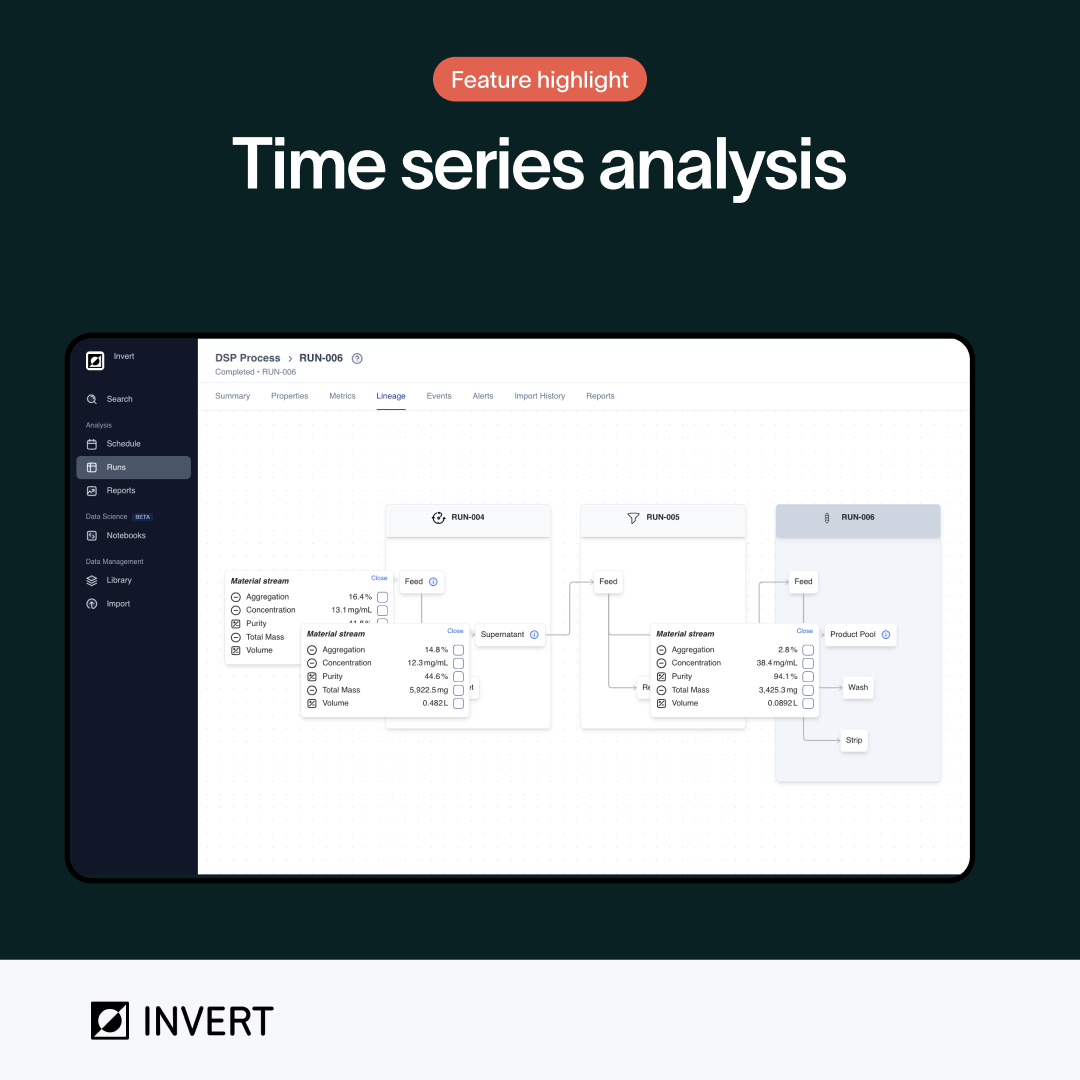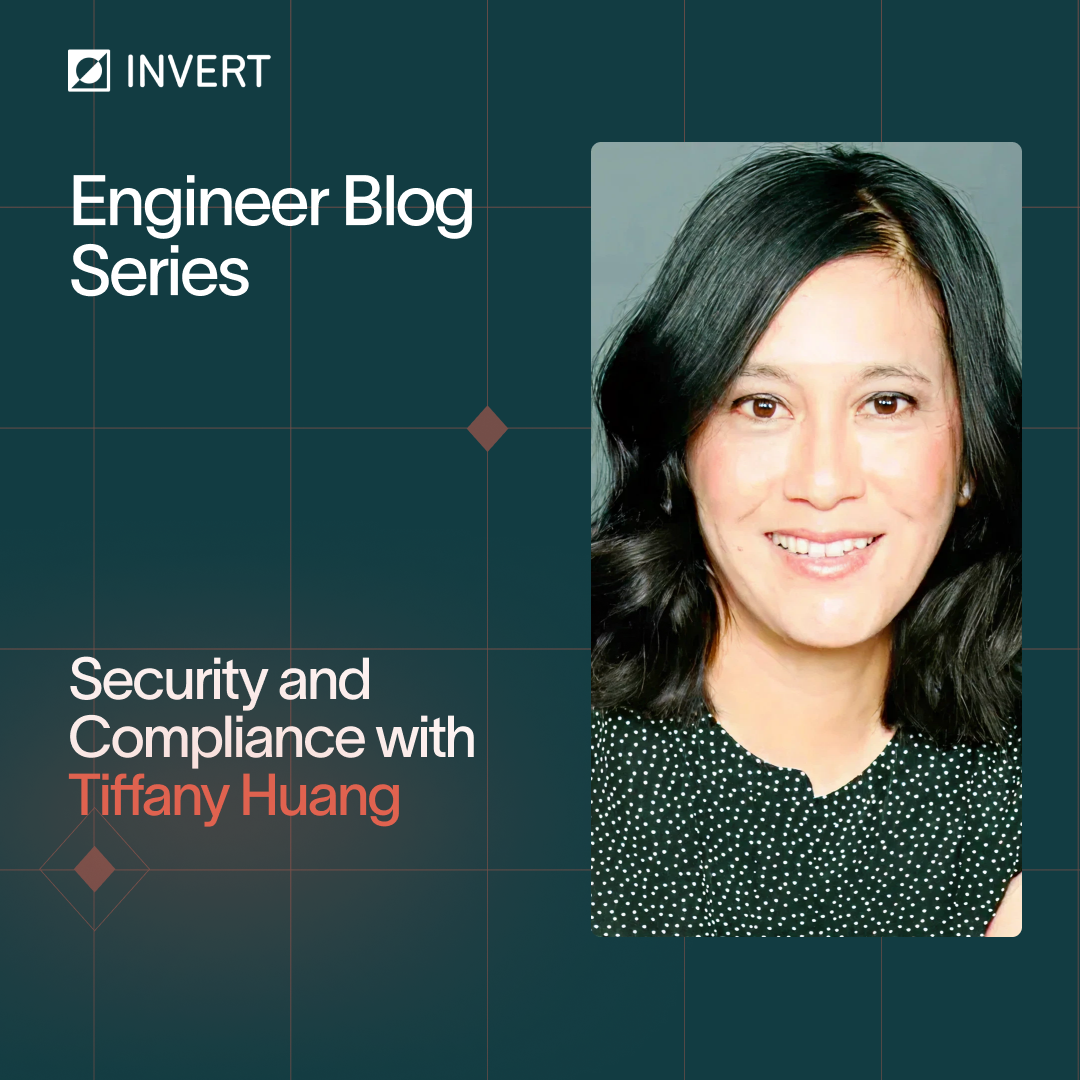Why Bioprocess Data Fragmentation Is Slowing Down the Industry

The Hidden Cost of Fragmented Bioprocess Data
Every bioprocessing organization understands that data is valuable. The challenge is that most of it never delivers its full potential. From bioreactor outputs and chromatography logs to lab notebooks and CDMO reports, bioprocess data lives in isolated systems that rarely connect or align.
The result is fragmentation. It is a quiet but expensive problem that slows every stage of development and manufacturing. Scientists spend hours merging spreadsheets and chasing missing context. Process engineers cannot easily compare runs across sites. Executives rely on dashboards that are already outdated.
In an industry where timing directly affects patient access and market opportunity, this inefficiency becomes a real obstacle to progress. The next generation of biomanufacturing is moving toward a single goal: transforming fragmented bioprocess data into a unified, AI-ready foundation that supports faster and more confident decisions.
What Data Fragmentation Looks Like in Practice
In upstream development, key process parameters and performance indicators are logged by bioreactor systems and stored separately in data historians. Downstream teams often use completely different data structures, sometimes maintained in spreadsheets or paper-based formats.
As processes move toward scale-up or tech transfer, these inconsistencies start to show.
- Lost lineage: Parameter names and definitions differ across systems.
- Delayed insights: It can take days or even weeks to clean and merge data after a run.
- Human error: Manual aggregation introduces inconsistencies that affect results.
- Limited traceability: Without harmonized records, audits become difficult and risk increases.
A 2024 BioProcess International survey found that more than sixty percent of biomanufacturing teams cite data silos as their biggest barrier to adopting advanced analytics and AI. Fragmentation is not only slowing science; it is preventing the industry from realizing its full digital potential.
Why Traditional Systems Fall Short
Many organizations try to fix data fragmentation with tools such as electronic lab notebooks (ELNs), laboratory information management systems (LIMS), or business intelligence (BI) dashboards. These tools help with structure and reporting, but they were never designed for the continuous, high-volume nature of bioprocess data.
LIMS systems manage samples and workflows but do not support real-time analysis. BI tools provide visualization but lack context and lineage. Custom-built integrations can temporarily fill the gap, yet they often break when new sensors or data sources are added.
This patchwork approach only treats the symptoms. It does not solve the underlying issue: the absence of a unified, harmonized, and AI-ready data layer.
The Case for an AI-Ready Data Foundation
To move beyond fragmented systems, leading biopharma organizations are investing in modern bioprocess data platforms that unify, harmonize, and contextualize information in real time.
An AI-ready data foundation offers several key advantages:
- Continuous data ingestion from instruments, sensors, and CDMOs.
- Automated harmonization that standardizes names, units, and metadata across systems.
- Contextualization that connects process parameters with quality and yield outcomes.
- Reproducibility and traceability to meet regulatory expectations.
- Scalability to power analytics, AI, and digital twins across the lifecycle.
This foundation supports modern capabilities such as real-time monitoring, AI-driven optimization, and digital twin simulation. Each of these requires data that is reliable, structured, and accessible.
Invert’s trusted data foundation provides this capability by continuously unifying time-series data across instruments, systems, and partners. The result is a single source of truth that is always current and ready for analysis.
From Fragmented to Unified: What Changes
When data becomes unified and AI-ready, every team experiences the difference.
- Scientists can view live experiment data instead of waiting for cleanup.
- Process engineers can compare runs and identify optimization opportunities in real time.
- IT teams can retire manual scripts and focus on enabling digital transformation.
- Executives can trust performance metrics based on accurate, traceable data.
Organizations that move toward unification see faster scale-up, reduced process variability, and stronger collaboration across functions and geographies.
The Path to an Integrated Bioprocess Data Ecosystem
Building an integrated ecosystem does not require starting from scratch. It requires a structured approach that focuses on connection, context, and compliance.
- Connect systems first. Establish a pipeline that links instruments, data historians, and CDMOs through secure connectors.
- Add context next. Use metadata mapping and standard ontologies to ensure every variable and result is clearly defined.
- Introduce intelligence. Apply analytics and AI tools directly to live data for immediate insight.
- Ensure governance. Implement validation and traceability aligned with GxP and 21 CFR Part 11.
With these elements in place, teams can evolve from managing data manually to operating within a living, connected data ecosystem that powers every decision.
How AI Accelerates Value Once Data Is Unified
Artificial intelligence delivers its highest value when it is built on clean, contextualized data. Machine learning models can then predict growth rates, detect anomalies, and identify the process parameters that have the greatest influence on yield and quality.
Without harmonized data, AI models struggle to learn. Their accuracy and reliability depend entirely on data consistency. Invert’s unified architecture solves this by continuously harmonizing massive time-series datasets across all process stages and locations.
The intelligence layer built on top provides real-time visualization, transparent analytics, and interpretable AI insights that scientists and engineers can act on with confidence.
Learn how Invert’s Bioprocess AI Software enables organizations to make faster, data-driven decisions across development and manufacturing.
The ROI of Data Harmonization
Companies that adopt unified, AI-ready data platforms consistently report measurable improvements:
- 30 to 50 percent reduction in time-to-insight by eliminating manual data cleanup.
- 20 to 30 percent faster scale-up through real-time visibility across sites.
- Significant reductions in rework and batch failure risk.
- Simplified audit readiness through traceable data lineage.
Beyond operational efficiency, unified data becomes a strategic asset. It provides the foundation for automation, predictive modeling, and digital twin initiatives that will define the next era of manufacturing excellence.
A Unified Data Foundation is the New Baseline for Innovation
The era of isolated spreadsheets and disconnected systems is ending. The future of bioprocessing belongs to organizations that can access and act on their data in real time.
By unifying fragmented information into a trusted, AI-ready foundation, companies can accelerate progress, reduce uncertainty, and move therapies to market faster.
This is the philosophy behind Invert. The platform transforms complex, fragmented bioprocess data into a reliable source of truth that drives clarity and confidence in every decision. When teams stop wrestling with data, they can focus on innovation, discovery, and impact.
In the world of bioprocessing, time matters. And waiting is no longer an option.
.png)
Engineer Blog Series: From Bioprocess to Software with Anthony Quach
Welcome to Invert’s Engineer Blog Series — a behind-the-scenes look at the product and how it’s built.In this post, software engineer Anthony Quach shares how his career in bioprocess development led him into software, and how that experience shapes the engineering decisions behind Invert.
Read More ↗
Connecting Shake Flask to Final Product with Lineage Views in Invert
Invert’s lineage view connects products across every unit operation and material transfer throughout the entire process. It acts as a family tree for your product, tracing its origins back through purification, fermentation, and inoculation. Instead of manually tracking down the source of each data point, lineages automatically show material streams as they pass through each step.
Read More ↗
Engineer Blog Series: Security & Compliance with Tiffany Huang
Welcome to Invert's Engineering Blog Series, a behind-the-scenes look into the product and how it's built. For our third post, senior software engineer Tiffany Huang speaks about how trust and security is a foundational principle at Invert, and how we ensure that data is kept secure, private, and compliant with industry regulations.
Read More ↗